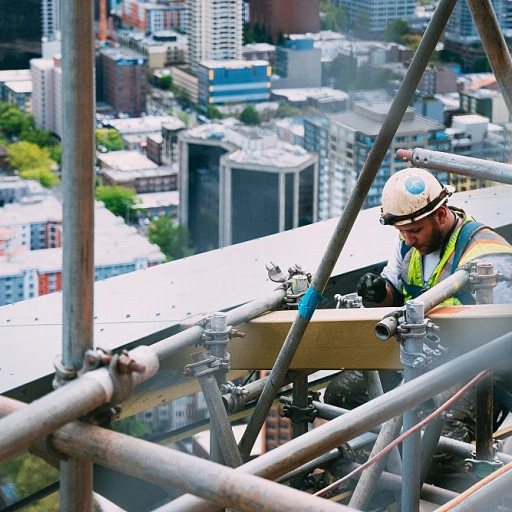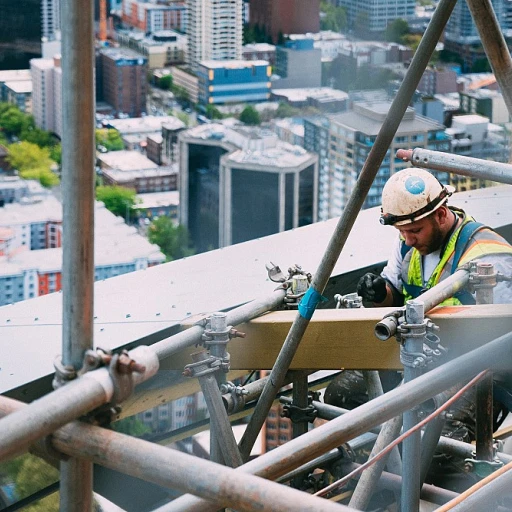
Understanding Fire Detection Systems
Exploring the Different Types of Fire Detection Systems
Incorporating the right fire detection systems is crucial for ensuring safety in any office environment. These systems are designed to identify the presence of fire, smoke, and carbon monoxide, providing the first line of defense. With an array of options available, organizations must consider multiple elements to choose the best fit for their needs. This section will delve into the various types of sensors and systems available, explaining their features and benefits.
Fire detection systems generally consist of smoke detectors, fire alarms, and heat detectors. Smoke detectors, either optical or ionization, are pivotal in spotting smoke particles, while smart smoke alarms offer real-time monitoring, allowing for prompt response by office personnel or emergency services. Additionally, integrating security alarms with fire alarms can enhance protection, effectively managing both fire and security threats.
A modern approach includes employing smart systems that connect to mobile apps, enabling alerts and controls from a distance. This empowerment at the users' fingertips ensures peace of mind, knowing the system can be monitored and adjusted anytime, anywhere.
Sprinkler systems and water-based fire protection mechanisms provide active control once the alarm system detects an anomaly, often serving as effective fire suppression techniques. Furthermore, advanced systems employ sensors that use wireless technology, minimizing false alarms and enhancing accuracy.
Understanding the distinct features and functionalities of each type of fire detection system allows office managers to make informed decisions. Investing in powerful security systems tailored to specific office setups can protect valuable assets, employees, and ensure the continuity of operations. For further insights, explore enhancing office efficiency with versatile office management systems.
Regulatory Requirements in the UK
Compliance and Safety
In the UK, adherence to stringent fire safety regulations is crucial to ensure the wellbeing of office employees and the protection of property. The Regulatory Reform (Fire Safety) Order 2005 predominantly governs these requirements, emphasizing the need for adequate fire detection and alarm systems in all commercial premises. To safeguard employees and assets effectively, it's essential for office managers to deploy robust fire alarms that comply with established statutory standards. This involves installing fire detection and alarm systems tailored to the unique configurations and functions of the office space. The systems must be capable of detecting fires promptly and initiating alarms to allow for swift evacuation. Moreover, integration with advanced smoke detectors, such as smart smoke detection systems, enhances office fire safety. These devices not only detect smoke, but can also differentiate between false alarms and actual threats in real time, thereby minimizing disruptions caused by unwarranted alerts. The deployment of security alarms and carbon monoxide detectors further bolsters office security and provides peace of mind. It's not just about installing the equipment; ongoing inspection and maintenance of these systems are mandated by law. Regular checks ensure that both the alarm systems and any ancillary fire protection measures, such as sprinkler systems, function optimally. Implementing an effective monitoring strategy, including real-time updates via mobile apps, allows for immediate action should an alarm trigger. Office managers looking to streamline the integration of fire safety measures within the broader security framework can explore methods that align with best practices in facility management. Optimising commercial facility management strategies can enhance these processes, ensuring a holistic approach to office safety protocols.Choosing the Right System for Your Office
Assessing the Best System for Optimal Fire Safety
When it comes to enhancing office safety, selecting the appropriate fire detection system is crucial. With numerous options available on the market, it can be overwhelming to determine which solution will provide the best protection for your office environment. An ideal system should ensure rapid detection and response, thereby safeguarding employees and assets from fire hazards. One primary consideration is the type of fire alarm systems available. From traditional smoke detectors to advanced smart devices, each system offers distinct benefits. For instance, smart smoke detectors not only signal the presence of smoke but can also alert building management through mobile apps, allowing for quick evacuation and response. Such systems ensure peace of mind by delivering real-time alerts directly to your phone. It's important to evaluate whether a combined approach—integrating various devices—can offer comprehensive protection. Systems that incorporate both smoke detectors and carbon monoxide sensors provide a higher level of safety. Additionally, integrating security alarms with fire detection systems further enhances protection. Another factor to consider is the power source. Some systems operate on batteries, while others require a direct connection to the building's power supply. Battery-operated devices offer flexibility and can function during power outages, whereas hardwired systems may provide more consistent performance. Water-based systems, such as sprinkler systems, offer another layer of fire protection by automatically responding to detected fires. Although effective, they require regular maintenance to ensure optimal functionality. Lastly, it's essential to ensure the chosen system is user-friendly and compatible with existing office management systems. Integration not only simplifies monitoring but also enhances safety protocols across the workplace. For instance, advanced systems can be integrated with office management solutions to optimize response times and streamline communication during emergency situations. Choosing the right fire detection system is not merely a regulatory necessity but a proactive measure to protect offices from potential danger. With careful assessment and thoughtful integration, offices can safeguard their environment and ensure ongoing safety for all employees.Integration with Office Management Systems
Seamless Integration for Enhanced Safety
Integrating advanced fire detection systems with existing office management systems is crucial for elevating safety measures and ensuring comprehensive protection. A seamless integration process allows for better monitoring, response, and overall management of fire-related emergencies. Start by evaluating your current office management systems and identifying how a robust fire detection system can enhance functionalities. Modern detection devices, such as smart smoke detectors and security alarms, offer the advantage of real-time monitoring and alerts. These smart systems can be synced with mobile apps, allowing office managers to receive timely fire alarm notifications on their mobile devices, ensuring rapid response regardless of their location. Another crucial aspect is integrating with security systems for a holistic safety network. By doing so, not only do you leverage the power of coordinated alerts, but you also achieve a comprehensive security alarm framework that includes protection from burglaries and unauthorized entries, enhancing overall office security. Combine different protection systems such as smoke alarms, carbon monoxide detectors, and sprinkler systems to create a multi-layered safety environment. When linked to office management systems, these devices ensure that any detected smoke or wildfire threat triggers automatic alerts and initiates protective measures like water sprinklers or alarms. This layered protection strategy effectively minimizes damage and enhances the safety of office personnel. Lastly, ensure that the integration respects existing fire safety regulatory requirements, aligning with the best practices identified earlier. Regular service and maintenance should be scheduled to prevent false alarms and ensure devices are operating at peak efficiency. This integrated approach not only boosts fire prevention but also provides peace of mind to office employees.Training and Maintenance
Providing Adequate Training and Continuous Maintenance
To ensure the effectiveness of fire detection systems in the office environment, it is crucial to provide comprehensive training and maintain the systems regularly. Training plays a pivotal role in equipping staff with the knowledge to handle fire emergencies efficiently. Utilizing a comprehensive training programme can help employees understand how smoke detectors, fire alarms, and other safety devices work. Such training should cover the operation of fire alarm systems, the role of smoke detectors, and the integration of security systems. In addition, staff need to be trained on how to respond to the alarm system, use the mobile app for real-time monitoring, and understand the importance of the sprinkler system and other fire protection measures. Furthermore, regular maintenance of fire detection systems is imperative to ensure their optimal function. This includes:- Testing smoke alarms and detectors regularly to prevent false alarms and ensure they are fully operational.
- Checking the fire alarm system and security alarm for any necessary repairs or updates.
- Ensuring that carbon monoxide and smart smoke detectors have active power sources and are water-resistant if applicable.
- Updating the system software and app services to incorporate the latest fire prevention technologies.
Case Studies of Effective Implementation
Real-World Success in Implementing Fire Detection Systems
To fully grasp the impact of advanced fire detection systems, let's explore how UK offices have successfully implemented them. Integrating fire alarm systems not only enhances safety but also aligns with regulatory standards.
In one instance, an office opted for a combination of smart smoke detectors and carbon monoxide detectors, enhancing the overall fire protection strategy. By doing this, they were able to significantly reduce false alarms while maintaining constant monitoring through a mobile app. This approach ensured real-time alerts, providing stakeholders peace of mind.
Another example involves offices integrating a comprehensive alarm system that works in tandem with existing security alarm and water sprinkler systems. By doing so, they fortified their environment against not only fires but also security breaches. The office management greatly benefited from integrating these systems into their broader office management systems, leading to a seamless operation during emergencies.
With regular training and maintenance, these systems continue to operate effectively, further showcasing their value in protecting office environments. The power of having dedicated services that cater to both traditional and smart smoke alarms speaks volumes about their commitment to fire prevention measures.













